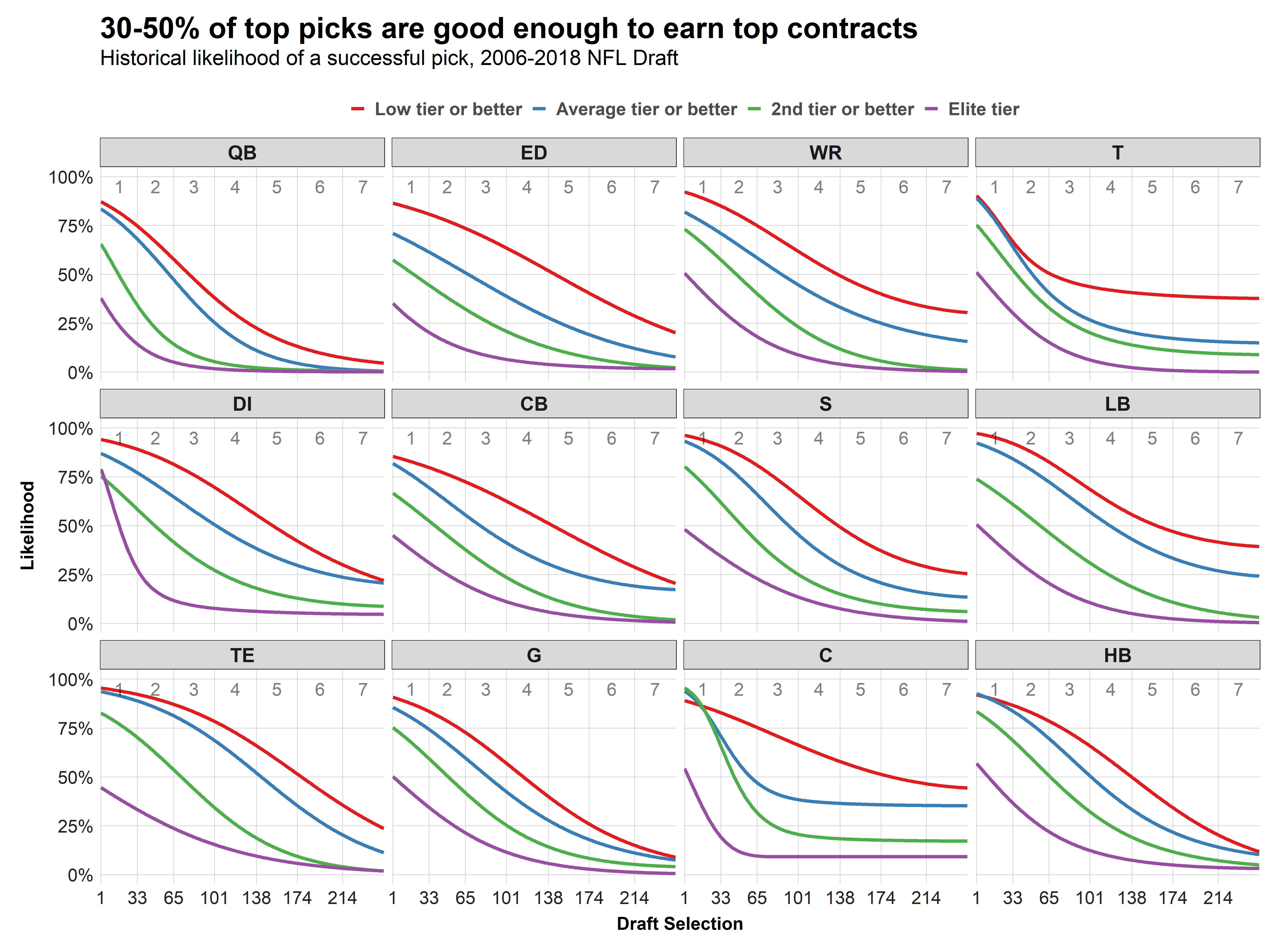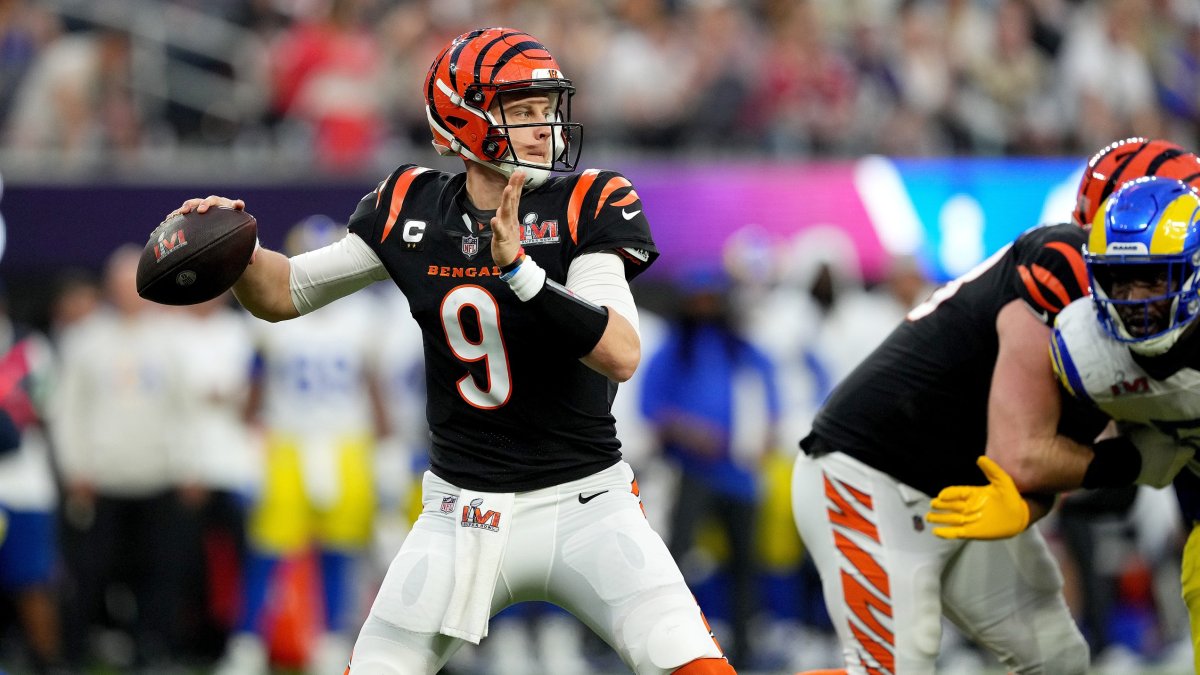With the introduction of standardized rookie contracts in 2011, the value of draft picks became greater than ever before.
When the Detroit Lions drafted Calvin Johnson in 2007 and Matthew Stafford in 2009, they signed them to contracts with an average annual cap hit of $10 million and $12 million, respectively. And back then, these deals accounted for 9% and 10% of the cap, meaning the Lions had to pay roughly 20% of their allotted cap space for players they didn’t even know would succeed in the NFL.
Nowadays, rookie contracts are another story entirely. In 2020, Cincinnati Bengals quarterback Joe Burrow signed a contract worth $9 million each year, while Ja’Marr Chase signed for $7.7 million per year in 2021. These numbers translate to 4.5% and 4% of the cap — a much lower percentage than the Lions had to pay for Calvin Johnson alone when he was a rookie.
Click here for more PFF tools:
Draft Guide & Big Board | Mock Draft Simulator
Dynasty Rankings & Projections | Free Agent Rankings | 2022 QB Annual
Player Grades
Thanks to standardized rookie contracts, the Bengals are paying much less for Burrow and Chase than it would cost to either extend them after the rookie contract or sign them as free agents or extend them after a trade.
The difference between the contract value of a player (rookie cost) on a rookie contract and his actual value to the team (performance value) is called surplus value, which we have written about before when we computed the surplus value in terms of wins using wins above replacement (PFF WAR) as the metric of measurement. This worked reasonably well, as we could retrieve and extend the work of Cade Massey and Richard Thaler, who first introduced the notion of surplus value.
In this article, we want to revisit our study and extend it to each position.
2022 NFL Draft position rankings:
Top 10 players at every position
QB | RB | WR | TE | iOL | OT | DI | EDGE | LB | CB | S
To do this, we have to use another method because WAR is not ideally suited to be split into different positions. After all, positional value from the angle of WAR is different from positional value as the NFL views it.
This is why we will measure the performance value of draft picks in terms of salary cap dollars, or how much the expected performance of a draft pick is worth on the free-agent market.
Simply, we are measuring the surplus value of draft picks from a financial perspective: the difference between what you are expected to pay for the performance of a draft pick versus the cost of a draft pick.
This method has some advantages. First of all, there is much less uncertainty to positional value. Recent contracts show that elite edge rushers are paid over $25 million in average per-year salary (APY), while elite cornerbacks are paid $18-20 million APY. In contrast, the best running backs or centers are paid $10-15 million APY.
The surplus value of T.J. Watt on his rookie contract was roughly $25 million APY, while the surplus value of Saquon Barkley on his rookie contract is approximately zero.
These numbers come with very little uncertainty, and that’s why this method is much more robust when splitting up the sample into different positions.
The surplus-value of each position
With the rookie contracts for 2022 already fixed (and estimated to a high degree of precision by our contract and salary cap analyst Brad Spielberger), the only thing we have to estimate is the performance value of each draft pick.
To do this, we look at the performance of each draft pick over the first four years since 2006 and put each pick into one of five tiers:
• Elite player worthy of a top contract at the position
• Good player worthy of a second-tier contract at the position
• Average player worthy of an average contract at the position
• Worse-than-average player worthy of a contract that pays a bit more than the veteran minimum
• Replacement-level player who is out of the league or worthy only of a minimum contract
Here are the contract values of these five tiers for each position, translated to the 2022 salary cap.

We create a “draft curve” for each position that estimates the likelihood of falling into one of those buckets based on draft selection.

Using the performance values for each tier and the probability of falling into the tiers for each position, we can compute the expected performance value for each position and draft selection.
The difference between the performance value and the rookie cost is the surplus value measured in APY. To get the total surplus value of a draft pick over the rookie contract, the value can be multiplied by four.
However, it’s noteworthy that most players don’t reach their ceiling in Year 1. The performance value (and thus the surplus value) is based on the contract a player is expected to earn, and a player's third and fourth year is most important when it comes to earning that contract. Thus, the real total surplus value throughout the rookie contract is most likely some number between three and four times the surplus value per year.
Here are the results for each position.
Exclusive content for premium subscribers

WANT TO KEEP READING?
Dominate Fantasy Football & Betting with AI-Powered Data & Tools Trusted By All 32 Teams
Already have a subscription? Log in




 © 2025 PFF - all rights reserved.
© 2025 PFF - all rights reserved.